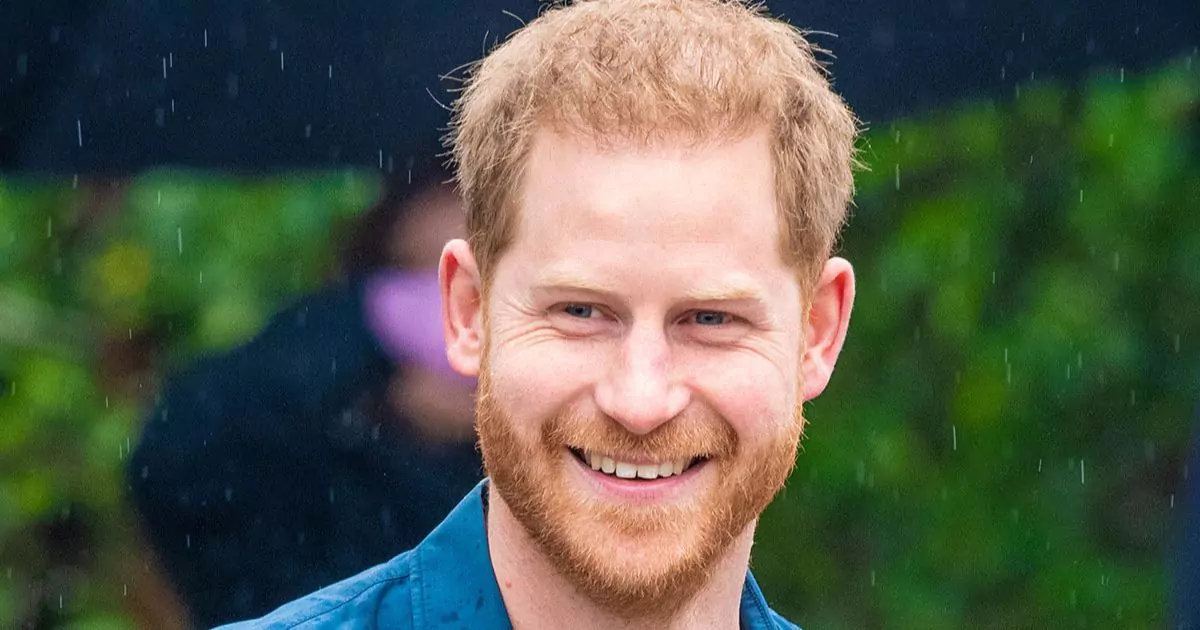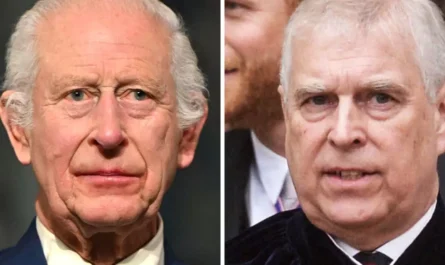In the age of social media, every detail about celebrities is magnified, especially when it comes to their appearances. Among these high-profile figures, Prince Harry, Duke of Sussex, often finds himself under the microscope. Recently, eagle-eyed fans and experts have speculated about his hairline, leading to questions about whether Prince Harry underwent hair transplant surgery. A renowned plastic surgeon even chimed in, suggesting a “visible scar” might hint at such a procedure.
So, did Prince Harry actually take the plunge into hair restoration surgery? Let’s explore the evidence, professional opinions, and the broader implications of this ongoing debate.
The Royal Hairline
Prince Harry, now in his late 30s, has experienced the kind of scrutiny few can imagine. As a member of the British royal family, his every move—from his love life to his wardrobe—is a subject of intense interest. Naturally, his hairline has also been a topic of discussion, especially since male pattern baldness runs in the Windsor family.
Prince Harry’s father, King Charles III, and older brother, Prince William, have both experienced noticeable hair loss over the years. While Prince William embraced his receding hairline early on, some royal observers believe Harry may have chosen a different route. Recent public appearances suggest a fuller head of hair, fueling rumors that the prince sought professional intervention to address his thinning hairline.
What is Hair Transplant Surgery?
Before diving into the specifics of Prince Harry’s situation, it’s important to understand what hair transplant surgery entails. Hair restoration is a cosmetic procedure that involves moving hair follicles from a donor area (usually the back of the scalp) to areas experiencing thinning or balding.
There are two primary types of hair transplant techniques:
- FUT (Follicular Unit Transplantation): This involves removing a strip of skin from the donor area, which often leaves a linear scar.
- FUE (Follicular Unit Extraction): A less invasive option, where individual follicles are extracted and implanted without leaving a noticeable scar.
Given the advancements in modern cosmetic procedures, both techniques can yield natural-looking results when performed by skilled professionals. However, faint scars or inconsistencies can sometimes offer clues about whether someone has undergone surgery.
A Plastic Surgeon’s Analysis: The “Visible Scar”
In an interview with a leading cosmetic surgery journal, a top plastic surgeon analyzed recent photos of Prince Harry. The surgeon highlighted what appeared to be a faint, linear scar on the back of the Duke’s scalp, sparking speculation that he may have opted for a hair transplant procedure, specifically the FUT method.
The surgeon remarked:
“The scar is subtle but visible in certain lighting, suggesting a possible hair restoration procedure. While it’s hard to confirm without direct examination, the placement and pattern align with what we typically see in FUT surgeries.”
The analysis doesn’t definitively confirm that Prince Harry underwent a hair transplant but does add weight to the ongoing rumors. Additionally, some observers noted that his hairline appeared denser during recent public appearances compared to photos from previous years.
Public Reaction and Social Media Buzz
As with most royal rumors, social media played a significant role in amplifying the conversation. Twitter and Instagram users dissected photos of Prince Harry from various angles, debating whether the change in his hairline was natural or the result of surgical intervention.
Some fans praised the possibility, saying it was refreshing to see a royal take charge of their appearance in a modern way. Others felt it was unnecessary, arguing that Prince Harry’s natural hairline was part of his charm.
Memes and jokes about the “royal hair transplant” circulated widely, with some users humorously comparing his potential procedure to other famous hair restoration success stories in Hollywood. However, the discussion also opened up deeper conversations about the pressures men face regarding their appearances, especially those in the public eye.
Why Hair Transplants Are Becoming More Common
Hair restoration procedures are no longer a taboo topic. In fact, they’ve become increasingly mainstream in recent years, with many high-profile individuals openly discussing their experiences. Celebrities like Elon Musk, Wayne Rooney, and John Travolta have been candid about their hair restoration journeys, helping to destigmatize the process.
The global hair transplant market has also seen significant growth, projected to reach over $25 billion by 2030. The rise of minimally invasive techniques like FUE has made the procedure more appealing to men seeking natural results with minimal downtime.
For public figures like Prince Harry, maintaining a polished appearance can feel like an unspoken requirement. Whether for professional purposes or personal confidence, hair restoration is becoming a practical choice for many in the spotlight.
Male Grooming and Body Image
The speculation surrounding Prince Harry’s hair transplant is more than just gossip—it highlights larger societal trends regarding male grooming and self-care. Traditionally, discussions about body image and cosmetic procedures were centered on women. However, in recent years, there has been a growing acknowledgment of the pressures men face to meet certain aesthetic standards.
Hair loss, in particular, can be a sensitive topic for many men, impacting self-esteem and confidence. While some embrace baldness as part of their identity, others choose to explore restorative options. Both approaches reflect personal choices and should be equally respected.
Prince Harry’s possible decision to address his hairline—if true—can be seen as a way of normalizing conversations about men taking control of their appearances without shame or judgment.
The Role of Stress and Genetics in Hair Loss
For Prince Harry, the potential for hair loss isn’t just genetic—it may also be linked to stress. The Duke of Sussex has faced an intense few years, from stepping back as a senior royal to navigating the challenges of life in the public eye. Stress is a well-documented contributor to hair loss, often accelerating genetic predispositions.
While genetics determine the pattern and severity of hair loss, external factors like stress, diet, and lifestyle can exacerbate the condition. For someone like Prince Harry, the combination of a high-pressure environment and a family history of balding could have prompted a proactive approach to hair restoration.
Why the Debate Matters
At its core, the debate about Prince Harry’s hair transplant is less about the procedure itself and more about the public’s fascination with celebrity lives. It underscores how even minor changes in appearance can become major talking points when you’re a public figure.
For the Duke of Sussex, whose life has been anything but ordinary, even a personal decision like addressing hair loss becomes fodder for speculation. However, it also highlights the double-edged sword of fame—where individuality often clashes with public expectations.
What’s Next for Prince Harry?
Whether or not Prince Harry underwent a hair transplant, one thing is certain: his appearance will continue to be a topic of conversation. As he balances his public responsibilities with his personal life in California, the Duke seems to be navigating his role as a modern royal on his own terms.
The conversation surrounding his hairline, while entertaining, also serves as a reminder of the pressures faced by public figures. In the end, whether Prince Harry chooses to address his hair loss or embrace it fully, his decision should be viewed as a personal one—no different from the choices made by millions of men worldwide.
Final Thoughts
The rumors about Prince Harry’s potential hair transplant surgery are yet another example of how public fascination with celebrities can sometimes blur the lines between curiosity and intrusion. Whether the Duke of Sussex opted for the procedure or not, the broader conversation about male grooming, societal expectations, and body image is one worth having.
As public figures like Prince Harry navigate the pressures of modern fame, they also pave the way for more open discussions about self-care and personal choice. At the end of the day, everyone deserves the freedom to look and feel their best—royal or not.

